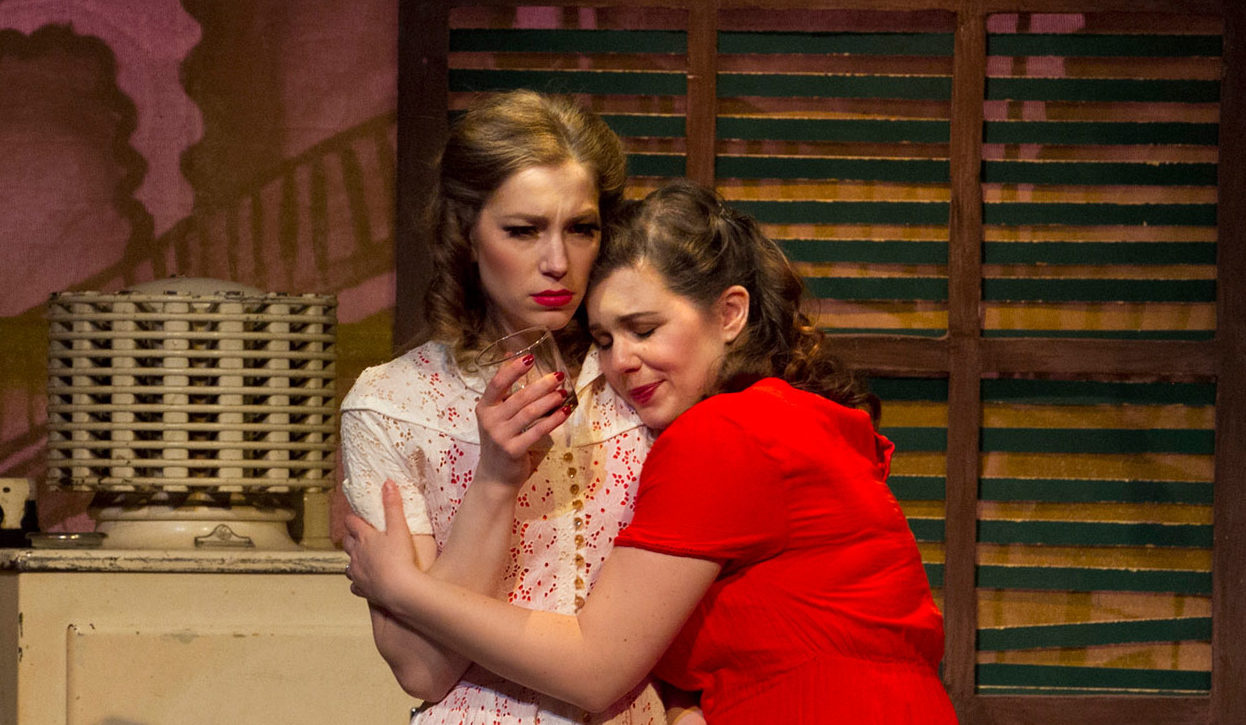Ottawa Little Theatre is the longest running community theatre company in Canada, having first opened its doors to theatregoers in 1913. Over the course of its 105 year-history, the company has produced many plays, both beloved and obscure to audiences. Continuing the 2017-18 season is director Sarah Hearn’s take on the classic Tennessee Williams’s play A Streetcar Named Desire, which runs from March 21 until April 7.
Though I’d like to think of myself as someone who’s well-versed in theatre, all I know about A Streetcar Named Desire was Marlon Brando screaming “Hey Stella!” at the top of his lungs in the film adaptation, but I wasn’t really sure why. However, after attending this performance, my view on Williams’ classic has drastically changed. Its views on feminism, violence against women, and class differences can still be relatable to a contemporary audience. Hearn said she also saw the play’s potential to engage with a modern audience on these topics viewed this notion when adapting the play. “I thought we and the audiences might see it as anachronistic, but it isn’t,” she said. “Because it’s themes, of the human condition, are as relevant today as they ever were.” That was one of the elements of this play that immediately caught my attention, and kept me hooked the whole time.
The play follows the story of Southern belle Blanche Dubois, who after having faced a series of challenges that have left her down-on-her luck, decides to leave Mississippi and head to the French Quarter of New Orleans to stay with her sister, Stella, and her husband, Stanley Kowalski. Blanche and Stanley immediately dislike each other, arguing over class status and the way in which Stanley treats Stella. The premise, on its own, is not what appealed to me so much, but rather the time period and how the premise fit into it.
The set consisted of the Kowalski’s two-room apartment, the kitchen space/temporary bedroom, and the couple’s bedroom. The actors use of the space was terrific, even during the set changes., Even when stagehands would come and switch the props out for the next scene, actors would still be keeping the audience’s interest alive by showing life around the Quarter. One thing that I also took notice of was the lighting, which employed lots of purples and reds, very bright and powerful colours. It was definitely a bold choice, but one that added to the dimensions of the story and added a certain level of emotion to the visual aspects of the play.
One of the things that really captured me during the play was how violence was taken into account, but I didn’t realize this until I walked in to give my ticket to the usher, who had warned me of the extreme depictions of physical and sexual violence. Immediately, I was intrigued as to how this content would be handled, since every director has a different approach. Hearn’s approach was to use an “intimacy coach,” a new concept in theatre where someone coaches actors on how to create a safe space where everyone involved in a violent or otherwise distressing scene feels comfortable and safe to perform.
To Hearn, it was important to establish trust within the scene, and to not perpetuate any myths about domestic and gendered violence. For those who have not seen or read this play (SPOILER ALERT) Blanche is raped by her brother-in-law, Stanley, who pretends to be innocent while no one believes Blanche’s story, chalking it up to her being nothing but trouble. I immediately thought of the current movements that are going on today regarding women coming out with their stories of abuse. It’s so powerful to share these stories and that these survivors get the support that they deserve. Hearn took this element into mind and created something that audiences can relate to, or at least can think about from a modern point of view, even if the play has other outdated elements.
I think that’s what is most powerful about this play, which is the fact that there are still so many aspects that we can understand and relate to in the modern day. I would definitely encourage people to buy a ticket and experience this play for themselves, as it’s a powerful story that Williams has created.
Photo provided






